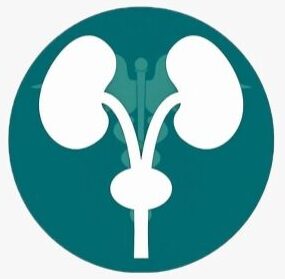Welcome to our comprehensive guide on BNI in urology. In this article, we will delve into the details of this procedure, its significance, and how it is performed. Whether you’re a patient seeking information or a medical professional looking to enhance your knowledge, this guide will cover the essentials of BNI in urology. Read on to gain a thorough understanding of this crucial urological intervention.
What is BNI?
Bladder Neck Incision, commonly referred to as BNI (BNI in urology), is a surgical procedure performed in urology to address specific bladder neck-related issues. The bladder neck is the area where the bladder connects to the urethra, and it plays a crucial role in controlling urine flow. BNI involves making a precise incision in the bladder neck to widen the passage and improve urine flow. This procedure is primarily employed to treat bladder neck obstruction, a condition that hinders the normal passage of urine.
Indications for BNI
BNI (BNI in urology) is typically recommended for individuals experiencing urinary symptoms caused by bladder neck obstruction. Some common indications for BNI include difficulty urinating, weak urine flow, frequent urinary tract infections, urinary retention, or incomplete bladder emptying. A thorough evaluation by a urologist is necessary to determine if BNI is the appropriate intervention for a specific case.
How is BNI performed?
During a BNI (BNI in urology) procedure, the patient is usually placed under general anesthesia. The urologist inserts a cystoscope, a thin, flexible tube with a camera, through the urethra and into the bladder. The bladder neck is visualized, and a small incision is made to widen the opening. This incision relieves the obstruction and facilitates smoother urine flow. The procedure is typically performed using minimally invasive techniques, resulting in smaller incisions, less pain, and faster recovery compared to traditional open surgery.
Benefits of BNI (BNI in urology)
BNI offers several benefits to patients with bladder neck obstruction. By widening the bladder neck, BNI improves urinary flow and reduces associated symptoms. The procedure is minimally invasive, resulting in shorter hospital stays, reduced post-operative pain, and faster recovery times. BNI also helps prevent complications associated with bladder neck obstruction, such as recurrent urinary tract infections or urinary retention.
Conclusion: What is BNI in urology
In conclusion, BNI (Bladder Neck Incision) is a significant procedure in urology used to address bladder neck obstruction and improve urinary flow. This minimally invasive surgical intervention provides relief to patients experiencing urinary symptoms and offers various benefits, including improved quality of life and reduced risk of complications. If you are facing bladder neck-related issues, consult with a urologist to determine if BNI is the appropriate treatment option for you.
FAQs: What is BNI in urology
Who is a suitable candidate for BNI in urology?
BNI is typically recommended for individuals experiencing urinary symptoms caused by bladder neck obstruction. However, each case is unique, and it is essential to consult with a urologist who will evaluate your specific condition to determine if BNI is appropriate for you.
Is BNI a painful procedure?
BNI is performed under general anesthesia, ensuring that the patient does not experience pain during the procedure. After the surgery, patients may experience some discomfort, but this can be managed with pain medication prescribed by the healthcare provider.
What is the recovery time after BNI?
The recovery time after BNI can vary depending on individual factors and the specific case. In general, patients can expect a few days of recovery in the hospital and a few weeks of limited activity and rest at home. It is essential to follow the post-operative instructions provided by the urologist to ensure proper healing.
Are there any risks or complications associated with BNI?
Like any surgical procedure, BNI carries some risks. Potential complications may include bleeding, infection, damage to surrounding structures, or recurrence of the obstruction. However, these risks are relatively rare, and your urologist will take necessary precautions to minimize them. It is important to discuss potential risks and complications with your healthcare provider before undergoing the procedure.
Are there alternative treatments available for bladder neck obstruction?
Yes, there are alternative treatments available for bladder neck obstruction, depending on the specific case. Some alternatives may include medications to relax the bladder neck muscles, minimally invasive procedures like transurethral incision of the bladder neck (TUI-BN), or open surgical approaches. It is crucial to discuss all available treatment options with your healthcare provider to determine the most suitable one for your condition.




